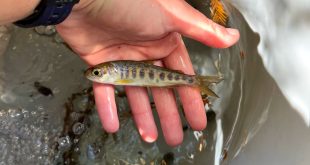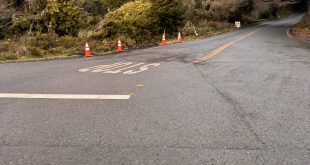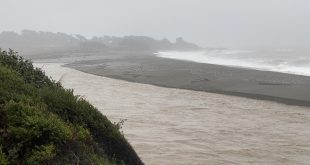CAL FIRE has reopened the Dogwood Timber Harvest Plan (THP 1-15-042-SON) once again for public comment.
Friends of Gualala River’s (FoGR) preliminary assessment of the recirculated Dogwood THP is presented in summary form below, for consideration by any citizen or organization preparing comments on the recirculated THP. FoGR encourages all commenters to independently read and assess relevant parts of the THP.
Send your comments to CAL FIRE to protest this timber harvest plan. Written comments must be received no later than 11:59 p.m. on May 3, 2019.
Email your comments to: santarosapubliccomment@fire.ca.gov
or send your comments via U.S. Mail to:
Forest Practice
California Department of Forestry and Fire Protection
135 Ridgway Ave.
Santa Rosa, CA 95401
In the subject line of your email message, or at the top of your letter, be sure to reference:
THP 1-15-042-SON “Dogwood”
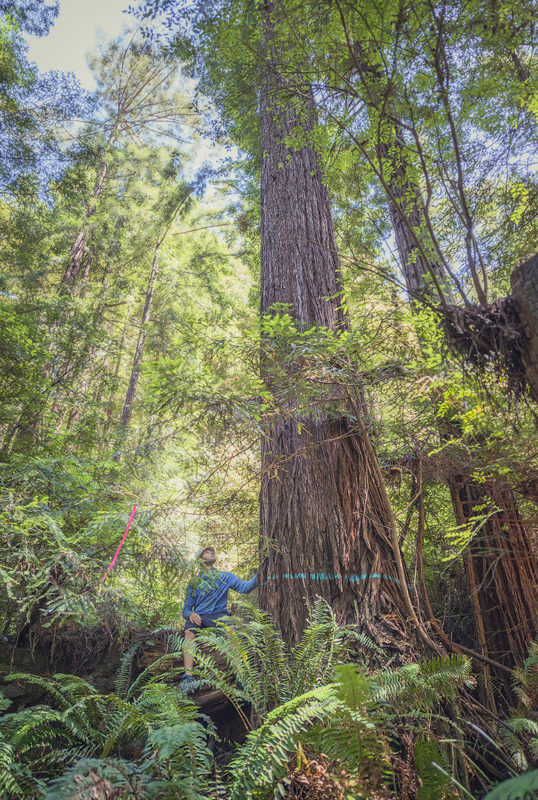
Dogwood THP summary
The “Dogwood” logging plan covers hundreds of acres of sensitive floodplain redwood forest stretching over more than five miles of the lower Gualala River, from the mouth, bordering Sonoma County Regional Park campgrounds, upstream to the vicinity of Annapolis Road. The logging plan targets mature 90-100 year old redwoods that regenerated after early historical logging.
It is the first large-scale logging plan to cover most of the floodplain forest left in the lower Gualala River, following changes in California Forest Practice Rules to extend protections against logging disturbances from stream-side buffer zones (Watercourse Lake Protection Zones) to entire “flood-prone areas” (floodplain forests, alluvial flats). The “Dogwood” plan, which is almost exclusively floodplain redwood forest, required a justified exception to the new rules in order to be approved. CAL FIRE Director Ken Pimlott agreed to the exception requested by GRT.
Dogwood chronology
CAL FIRE has approved the Dogwood floodplain logging plan twice. FoGR sued twice, arguing that the plan failed to comply with California law, and won in court both times. Now CAL FIRE is reviewing the third version of the Dogwood THP.
5/04/15 THP submitted 11/24/15 Reopened for public comment 4/15/16 Reopened for public comment again 7/01/16 Approved by CAL FIRE 4/18/17 Approval rescinded by Superior Court 10/27/17 Reopened for public comment again 3/30/18 Approved by CAL FIRE 10/16/18 Approval rescinded again by Superior Court 1/22/19 Reopened for public comment again 4/03/19 Reopened for public comment again
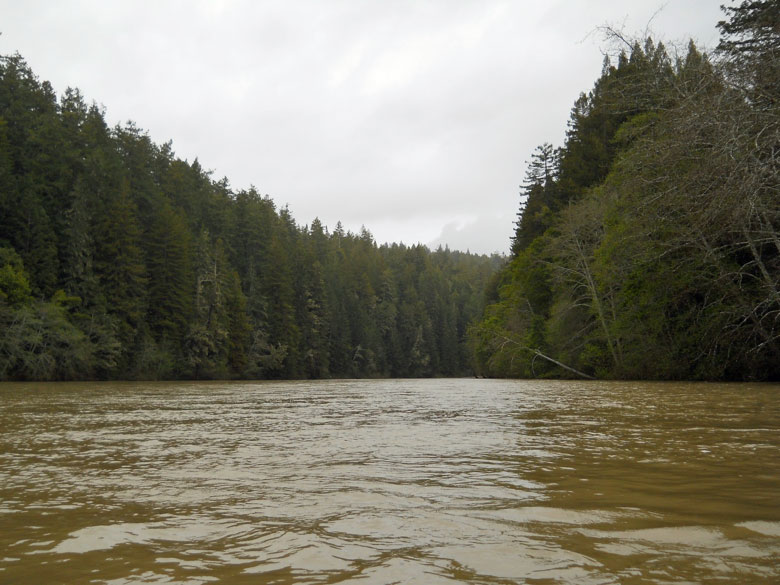
THP 1-15-042-SON “Dogwood” – RECIRCULATION NOTICE, APRIL 3, 2019
CAL FIRE reopened the Dogwood Timber Harvest Plan (THP) again for a 30-day public comment period. Written comments must be received no later than 11:59 p.m. on May 3, 2019.
CAL FIRE stated reasons for recirculation as “significant new information” added to THP, following January 22, 2019 recirculation. Specific new information added to THP in response to comments from Jan 22 2019 THP:
- Alternatives analysis
- 105-113,
- 113.3-133.4
- Cumulative impacts assessment
- (THP pp. 114-138,
- 138.1-138.3,
- 139
- 141.17-141.19
- 142-214
- Additional THP revisions on “wet areas”, rare plants, and sensitive plant communities cumulative impacts, p. 210.1
SCOPE OF PUBLIC AND AGENCY COMMENTS
CAL FIRE’s recirculation notice states that in order to be considered by CAL FIRE, comments must be in writing and pertain specifically to the subjects listed in bullets (above). However, this discretionary administrative limit on comments set by CAL FIRE for the THP does not cite any authority to restrict the scope of comments under CEQA (California Environmental Quality Act) regulations. FoGR recommends that all substantive, relevant comments about significant impacts, mitigation, or project alternatives, especially those that can be shown to relate to significant cumulative impacts, can and should be included in public comments under CEQA. For example, FoGR supports California Department of Fish and Wildlife’s additional (February 2019) recommendations about mitigation for foothill yellow-legged frog cumulative impacts.
FoGR RECOMMENDED CONSIDERATIONS FOR COMMENTS
FoGR’s preliminary assessment of the recirculated Dogwood THP is presented in summary form below, for consideration by any citizen or organization preparing comments on the recirculated THP. FoGR encourages all commenters to independently read and assess relevant parts of the THP.
Because the THP is voluminous (over 200 pages), dense, and technical, and lacks plain CEQA language, an index, table of contents, and a searchable digital document format, FoGR is highlighting specific pages and paragraphs to facilitate public review on issues that have risen to the top of public concerns in past versions of the Dogwood THP.
Recommended list of high priority comment subject areas
The priorities for comments are aimed at two goals. First and foremost, our practical aim for comments is to be effective in influencing the Dogwood THP process to best protect the Gualala River, including its floodplain, within the framework of applicable state environmental regulations. These include CEQA, California Endangered Species Act, Forest Practices Act, and the Porter-Cologne Water Quality Control Act. Our higher goal with our comments is to alert resource agencies, elected officials, and policymakers how important it is to protect the Gualala River, and why.
- Alternatives and cumulative impacts
- Biological Resources
- Seasonal wetlands – cumulative impact assessment and mitigation
- Sensitive wetland plant communities
- Special-status plant, fringed corn-lily
- Special-status frogs
- Wildlife trees
- Special-status fish
ALTERNATIVES AND CUMULATIVE IMPACTS RELATED TO SENSITIVE SEASONAL WETLANDS IN FLOOD PRONE AREAS
- The seasonal wetland cumulative impact issues are essential to the analysis of alternatives. The purpose of alternatives analyses in CEQA is to consider alternative project designs, including changes in configuration (boundaries), size, location, or methods, to avoid or minimize significant impacts. Alternatives in the Dogwood THP still do not mention or consider seasonal wetlands, or configurations (“no cut” areas) that avoid seasonal wetlands, or sensitive wetland plant communities. Alternatives should fully consider accurate and complete evidence about seasonal wetlands of the floodplain within Dogwood THP (direct impacts) and in past and future THPs (cumulative impacts).
- Seasonal floodplain wetlands in the Dogwood THP are also essential to water quality and fish. Seasonal floodplain wetlands in the Dogwood THP are also essential to water quality (sediment trapping and stabilization) and ephemeral off-channel salmonid habitat (federally and state-listed steelhead trout, coho salmon) of the Gualala River. Alternatives that minimize or avoid significant seasonal wetland impacts also are essential to protection of off-channel salmonid habitat and important floodplain ecosystem functions that protect and maintain water quality (reduction of excess fine sediment in floodwaters).
- Seasonal wetlands are not the same as “wet areas”. Seasonal wetlands in California’s coastal Mediterranean climate are those that are wet or moist only during the wet season, when heavy rains and annual river overbank flooding occurs. Seasonal wetlands are not the same as the older, narrower category of “wet areas” defined by Forest Practice Rules. “Wet Areas” refer only to the wettest of wetlands that remain wet almost all year round. These are not as extensive or widespread in the Gualala River floodplain as seasonal wetlands. Cumulative impacts to seasonal wetlands have not been assessed in the Dogwood THP because they have not been identified or mapped accurately, and no documented wetland survey results (no evidence, data sheets, survey maps) have been presented in the Dogwood THP to provide a basis for alternatives that minimize or avoid significant impacts to seasonal wetlands.
- Seasonal wetlands are widespread in the floodplain of the river, including the Dogwood THP area.
- Seasonal wetlands occur in poorly drained flats, swales, relict overflow channels, and in old skid road track depressions in the Gualala River floodplain.
- FoGR and Forest Unlimited representatives, guided by Henry Alden of Gualala Redwoods Inc. during an inspection of a portion of Dogwood THP in 2015, directly observed conspicuous slough sedge wetlands (both intact and disturbed ones) in plain view of the entire Dogwood Haul Road route and Buckeye Creek roads. There is no doubt that they are present, but the THP incorrectly denies that they are.
- The Dogwood THP is entirely in the floodplain of the Gualala River, where ecologically significant seasonal wetlands are widely distributed in the Dogwood THP floodplain areas. They are a significant, special-status protected resource and must be fully addressed by specific THP mitigation and alternatives.
ALTERNATIVES ANALYSIS RECOMMENDATIONS
Alternatives to avoid and minimize impacts to floodplain seasonal wetlands
- Because any alternative that protects significant seasonal wetland habitats in the floodplain requires an accurate inventory and map of this sensitive resource, no THP should be approved until an alternatives analysis fully considers a complete, accurate evidence-based (scientifically sound survey) map of seasonal floodplain wetlands in the Dogwood THP area.
- CAL FIRE should consult with resource agency (CDFW, RWQCB, NOAA) experts in riparian (floodplain) wetland ecology, or other qualified wetland experts, to develop authentic, feasible alternatives to avoid or minimize cumulative impacts to Gualala River seasonal wetlands. This is necessary because most THPs prepared by Registered Professional Foresters are in uplands, where there are no floodplains, and few, small seasonal wetlands.
- Dogwood THP alternatives should include at least one that avoids disturbance to flood-prone areas, consistent with the standard flood prone rules without substituting in-lieu practices (Forest Practice Rules) that are less protective of wetlands. This is especially important for old skid roads track depressions that develop wetland characteristics.
- A wetland-protective reduced impact project alternative (CEQA) should evaluate exclusion of logging disturbances in flood-prone areas, consistent with the standard flood prone rules (Forest Practice Rules). This alternative applies especially to skid trail use or construction, in and around sensitive seasonal wetland habitats, including old skid trail depressions that have reverted to wetland habitat.
- An alternative or alternatives complying with the standard rules should be compared with alternatives based on in-lieu (substitute) practices allowing disturbance of the floodplain by skid road use, as proposed in the Dogwood THP.
- Intermediate alternatives should evaluate excluding logging disturbances and skid road use (Standard flood prone rules) in zones where sensitive seasonal wetlands are most extensive or frequent, and applying in-lieu practices in flood prone areas where evidence indicates seasonal wetlands are infrequent and small. Compensatory mitigation for significant impacts to seasonal wetlands, through wetland restoration or creation in the floodplain, should be evaluated for wetlands impacted by in-lieu practices.
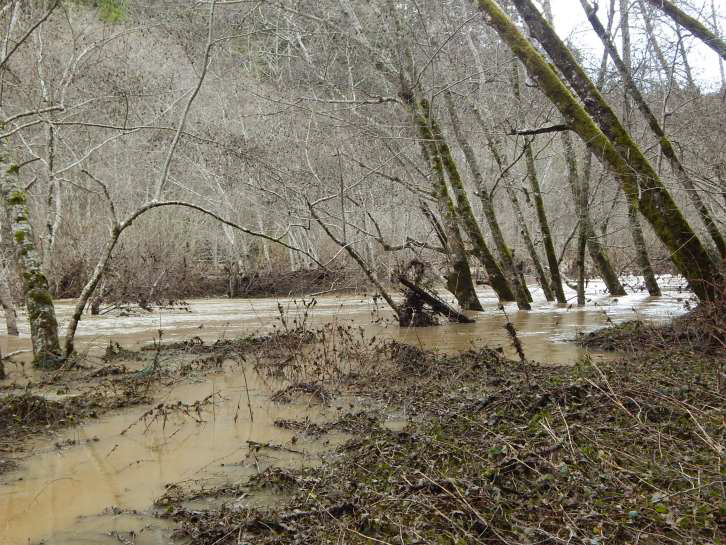
CUMULATIVE IMPACT ASSESSMENT AND MITIGATION RECOMMENDATIONS
- Recommendation for seasonal wetland cumulative impact assessment and mitigation:
- No cumulative impact assessment of seasonal wetlands is possible without an accurate survey of seasonal wetlands, so CAL FIRE should require one to inform the Dogwood THP.
- No Dogwood THP should be approved until accurate seasonal wetland surveys within the Dogwood THP area, past flood-prone THP areas (including “Kestrel” and “German South” THP areas) along the lower Gualala River are prepared and presented in maps, and assessed for cumulative impacts and mitigation.
- CAL FIRE should consult with resource agency (CDFW, RWQCB, NOAA) experts in riparian (floodplain) wetland ecology, or other qualified wetland experts, to develop scientifically accurate and meaningful baseline data on seasonal wetlands along the lower Gualala River to support an adequate assessment of cumulative impacts.
- Sensitive seasonal wetland plant community impacts (significant potential direct, indirect, and cumulative impacts)
- Slough sedge meadows (swards). Seasonal wetlands in the Gualala floodplain are often dominated by slough sedge, an obligate wetland plant (found almost always only in true “wetlands” defined in the federal Clean Water Act, and also by the State of California). Slough sedge meadows (“swards”) are also classified as a sensitive plant community by the California Department of Fish and Wildlife (CDFW). CDFW advised CAL FIRE that they did not even include this sensitive wetland plant community in the THP assessment of impacts.
- Fringed corn-lily (Veratrum fimbriatum). Fringed corn-lily is a special-status, rare wetland plant that occurs in or in the vicinity of the Dogwood THP area, but it was not even considered on the list of plants the Registered Professional Forester surveyed. The Dogwood THP does not mention or assess impacts to this species. The flowering season for detection of this plant is summer-fall.
- Recommendations for cumulative impact assessment and mitigation:
- No THP should be approved until accurate seasonal wetland surveys specifically identify “slough sedge swards” (CDFW classification) within the Dogwood THP area, past flood-prone THP areas (including “Kestrel” and “German South” THP areas) along the lower Gualala River, and are prepared and presented in maps for cumulative impact assessment and mitigation by avoidance of disturbances.
- No THP should be approved until CDFW protocol-compliant surveys by a qualified botanist are conducted for fringed corn-lily along the entire Dogwood THP area. All other potential rare plants should be included in this survey as CDFW rare plant (floristic survey) protocols require.
- CAL FIRE should ensure that resource agency wetland experts from CDFW and RWQCB, NOAA or other qualified riparian (floodplain) wetland experts, provide technical supervision and review of wetland survey and assessment methods, and comment on their interpretation and conclusions.
- CAL FIRE should rigorously assess the need for compensatory mitigation for any significant potential impacts to seasonal wetlands or fringed corn-lily that are not avoided, consistent with standard CEQA and Porter-Cologne Water Quality Act practices and policies.
- The recirculated Dogwood 2 THP should include data, analysis and conclusions from past, current and future THPs regarding those THPs’ impacts to rare plants, wetlands, listed and endangered and threatened species, and other sensitive species (including but not limited to foothill yellow-legged frog). That is, the Dogwood 2 THP should include any available data and summaries of analysis and conclusions from the German South, Plum, Cherry, Little and other adjacent and nearby past, current and future THPs. The Dogwood 2 THP should then use those data and summaries to prepare a new analysis that includes estimates of the potential cumulative impacts of those projects added to the direct and indirect impacts from Dogwood 2 THP.
- Special-status fish and wildlife surveys, impact assessment, and mitigation
- Foothill yellow-legged frog (Rana boylii). As recommended by CDFW, new protocol surveys for foothill yellow-legged frog (FYLF, candidate species for listing under the California Endangered Species Act) should be conducted during the appropriate spring-summer low flow season. An impact avoidance and minimization (mitigation) plan, reviewed and approved by CDFW, should be completed before any THP is approved.
- California red-legged frog (Rana draytonii). Protocol night surveys for this federally listed species, which forages (feeds) at night in coastal floodplains and uplands influenced by marine air layers (summer fog), should be conducted in the THP area. Adult frog survey areas for this species are not limited to breeding habitat in standing water. An impact avoidance and minimization (mitigation) plan for CRLF adults in the floodplain, prepared in consultation with a qualified CRLF expert and reviewed and approved by CDFW, should be completed before any THP is approved.
- Wildlife Trees: Both decadent and structurally sound “late seral” (mature, old trees with complex structure and cavities, including but not limited to old growth trees) should be surveyed and inventoried throughout the flood-prone area of the THP. Cumulative impacts to wildlife trees should be assessed based on this inventory. All wildlife trees in flood-prone areas (WLPZ) should be protected. No “hazard trees” should be excluded from protection. If decadent wildlife trees pose potential hazards to logging, logging operations should avoid risk of hazard by routing around them, not by removing them. CAL FIRE should modify the THP to include this as a condition of authorization.
- Steelhead trout off-channel habitat in flood-prone areas. The THP should assess the existing capacity of the floodplain to support steelhead growth by rapid feeding on terrestrial invertebrates during flood (overbank flow, floodplain submergence) events. The THP should assess the impacts of logging disturbance on floodplain productivity due to logging disturbances that crush vegetation and expose litter, moist organic debris, subsoil, roots, and soil invertebrates to light and drying in summer.
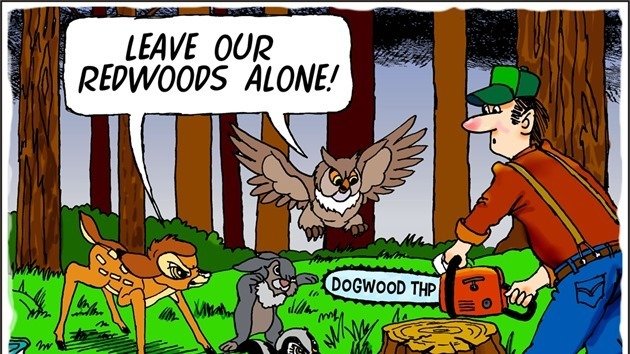
 Friends of Gualala River Protecting the Gualala River watershed and the species living within it
Friends of Gualala River Protecting the Gualala River watershed and the species living within it
